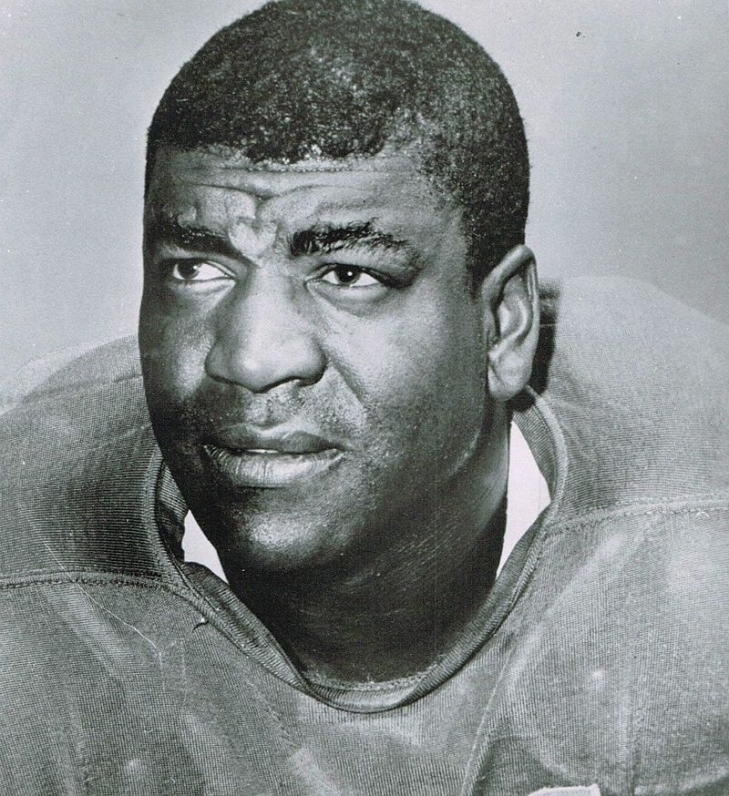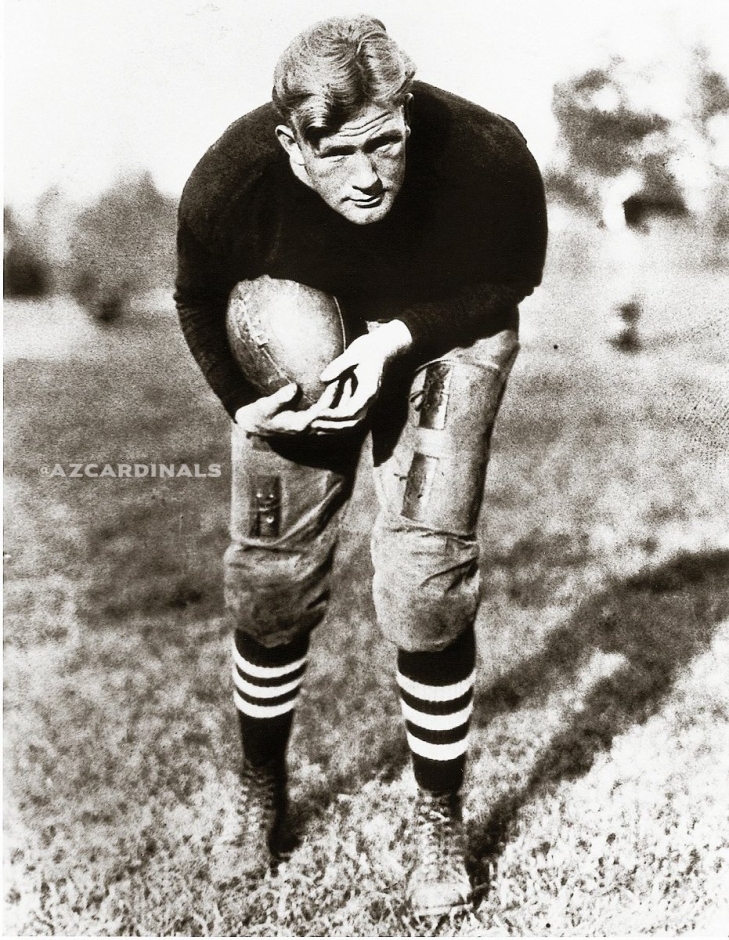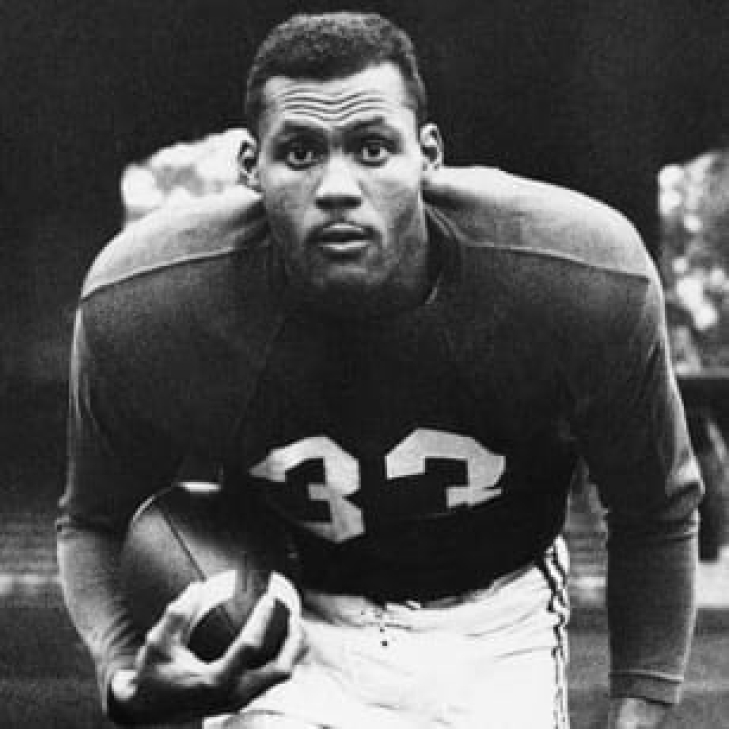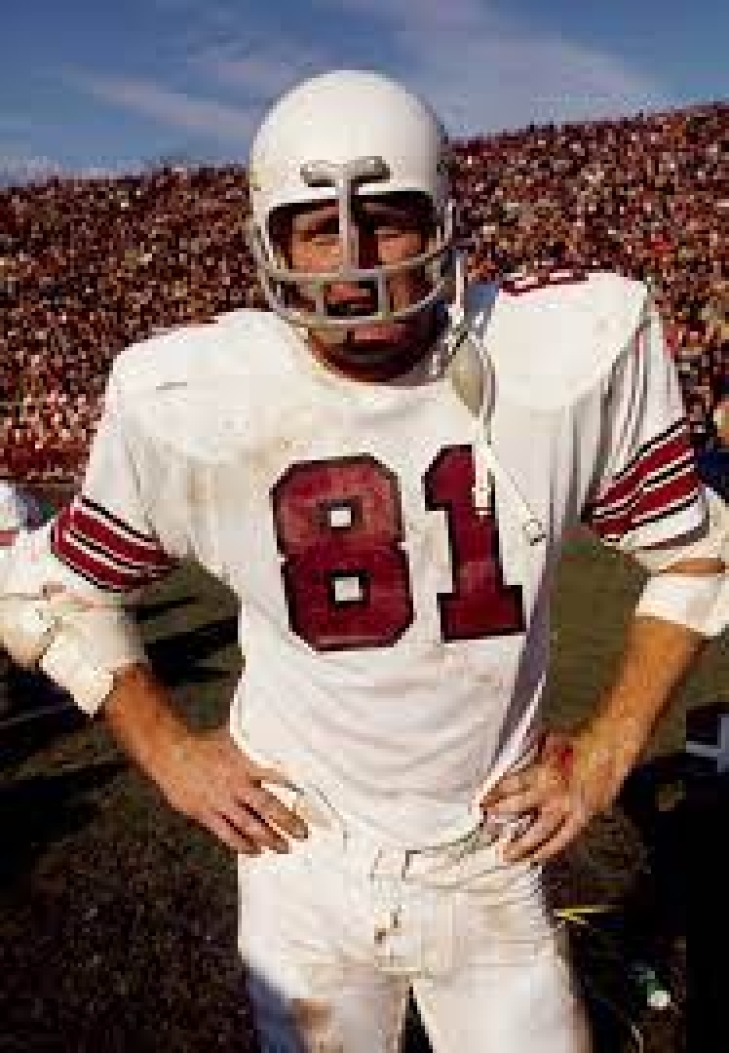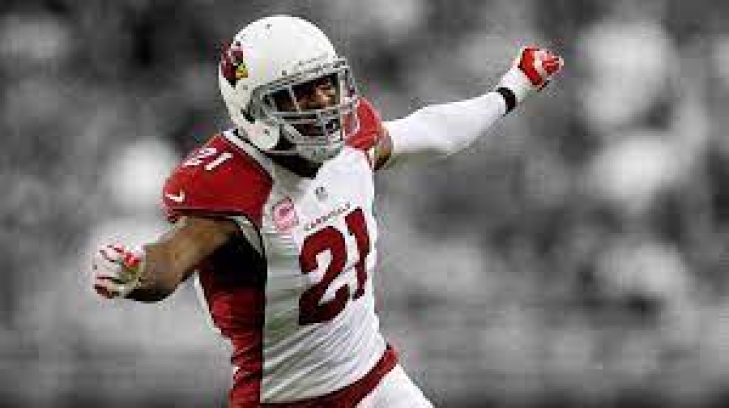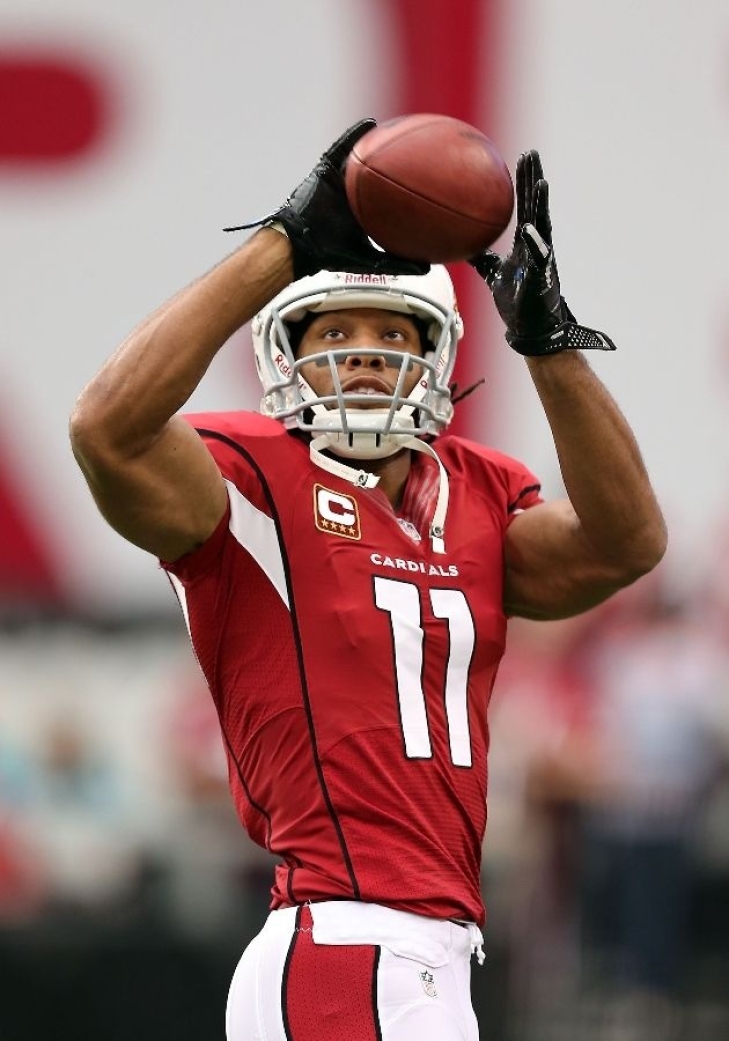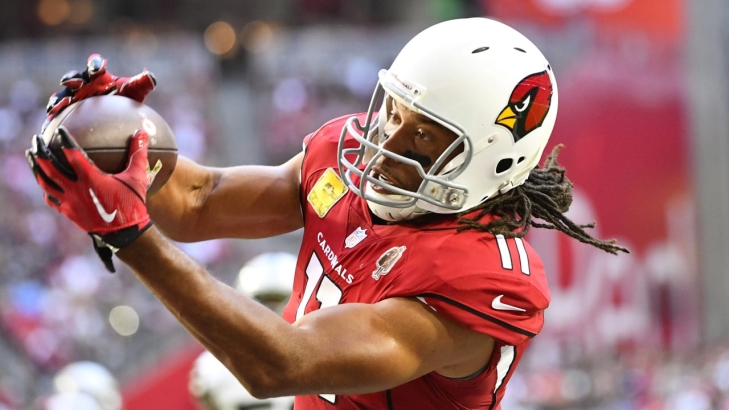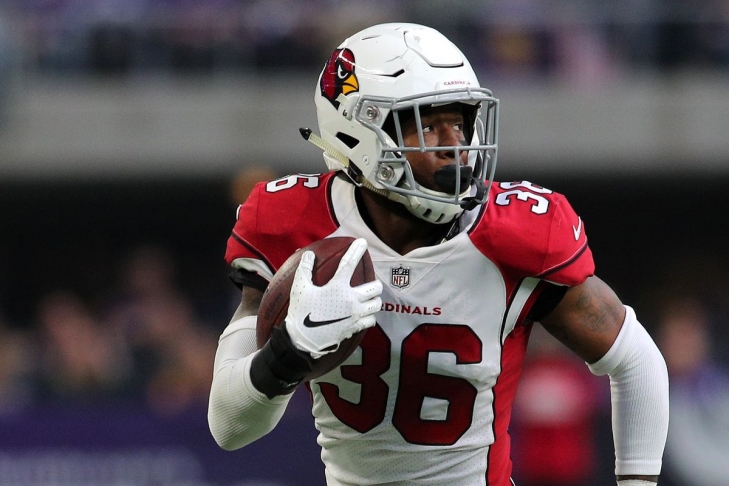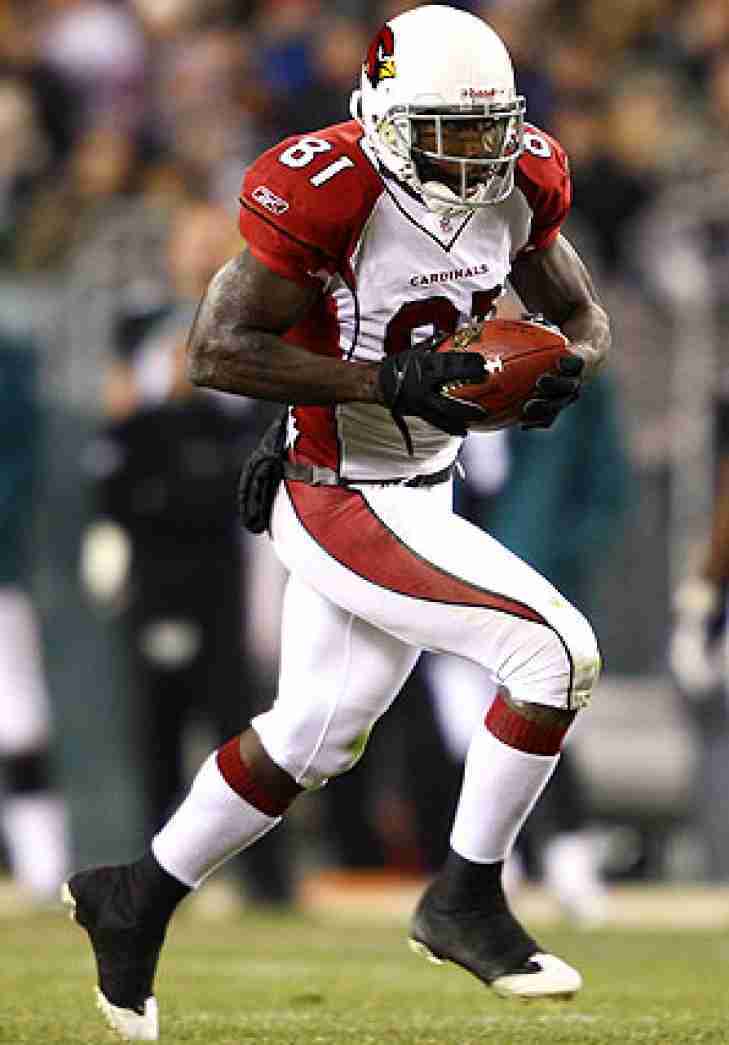Warning: Attempt to read property "params" on null in /home/notinhal/public_html/plugins/k2/k2canonical/k2canonical.php on line 382
11. Dick "Night Train" Lane
Is there a cooler-sounding name than Dick "Night Train” Lane?
Maybe, but it is not by much.
Nicknamed after the early R&B Instrumental of the same name, Lane was a rarity because he walked on to a professional team (Los Angeles Rams) years after playing in college. Lane asked for (and received) a tryout and subsequently made the team and became a starter as a rookie, where he led the NFL in Interceptions (14). Two years later, he was dealt to the Chicago Cardinals as part of a three-team trade, and the Night Train would be a Cardinal for the next six seasons.
Lane was a dominant Defensive Back for Chicago, collecting four Pro Bowls (1954, 1955, 1956 & 1958) with a First Team All-Pro Selection in 1956. The eventual All-Decade player secured his second Interception Title in '54, and 30 of his 68 picks were as a Cardinal.
The Cardinals might have thought he was done, and they traded him to Detroit before the 1960 Season, where he played six more years.
Lane received the Pro Football Hall of Fame call in 1974 and was named to the NFL 50th, 75th, and 100th Anniversary Teams. In 2006, the Cardinals enshrined Lane in their first Ring of Honor Class.
10. Ernie Nevers
Ernie Nevers was one of the best professional players in Football in 1926 and 1927, starring for the Duluth Eskimos, but it was a different time, and he left the pro ranks to coach at Stanford for a year. Despite saying that he would not return to the gridiron, the lure of the game proved too great, and Nevers joined the Chicago Cardinals in 1929 and had what was the most remarkable offensive season to date.
While official stats on Yardage, Rushing, Passing, and many others are unavailable, we know he was a bona fide touchdown creator. He set the since-tied record of six Rushing Touchdowns in a Game and scored all 40 Points in that contest. Named a Consensus First Team All-Pro, he would be so again over the next two years, though this time, he also served as Chicago's Head Coach.
Nevers retired after the 1931 Season, this time for good, and it kept his health in check as the pounding he took from being the game's top Fullback for three years took its toll.
Despite only playing two years in the 1930s, Nevers was named to the All-Decade Team and was named to the inaugural Pro Football Hall of Fame Class in 1963. Decades later, he was also part of the initial Cardinals Ring of Honor.
9. Ollie Matson
Ollie Matson, a 4x400 Olympic Gold Medalist in the 1952 Helsinki Games, already had plans after achieving huge Track and Field success; he was already the Third Overall Draft Pick by the Chicago Cardinals.
Matson had a strong rookie year with 1,326 All-Purpose Yards, a Pro Bowl, and a First Team All-Pro Selection. He missed 1953 due to military service but was an even better version upon his return, leading the NFL in All-Purpose Yards in 1954 (1,666) and 1956 (1,524) and never had a season with the Cardinals where he had less than 1,200 APY. His trophy case was laden over this period with six Pro Bowls and five First Team All-Pros.
Matson was among the few stars that the Cardinals had in the 50s, but his supporting cast was not great. Chicago only had one winning season while he was there, and the Los Angeles Rams offered seven players and two draft picks for Matson, which they agreed to. None of the players that the Cardinals received made much of a difference, but Matson's skills declined after he moved west. Matson left behind 8,544 All-Purpose Yards and 46 Touchdowns.
An All-Decade Player in the 1950s, Matson entered the Pro Football Hall of Fame in 1972. He was part of the first group when the Cardinals began their Ring of Honor in 2006.
8. Jackie Smith
The speed of Jackie Smith earned him a late-round selection (10th Round) in 1963 by St. Louis, who converted the Flanker into Tight End.
Smith was an excellent blocker, but his receiving skills helped transform the position, and he amassed 7,918 Yards with 40 Touchdowns from the air. He also earned five consecutive Pro Bowl Selections (1966-70).
Notably, Smith also served as the Cardinals Punter for his first three years.
He entered the Pro Football Hall of Fame in 1994.
7. Patrick Peterson
The Cardinals have been blessed with phenomenal Defensive Backs, haven’t they?
With Patrick Peterson's arrival in 2011, Peterson followed along the Cardinals' tradition of great DBs, and among them all, he had the best rookie year. Winning the starting job at Right Corner, Peterson was a Pro Bowl Selection for his Punt Returning, having returned four for Touchdowns and leading the NFL in Punt Return Yards.
Peterson moved to the left side as a sophomore, staying there until his departure. He went to the next seven Pro Bowls, adding two more First Team All-Pros (He was one as a rookie) and was still doing duties as a Punt Returner. Arizona was up and down during Peterson's tenure, but through his career, they had no worries at Left Corner.
Peterson’s lengthy tenure with Arizona concluded when he signed with Minnesota in 2021. With the Cards, Peterson recorded 28 Interceptions and 499 Tackles.
5. Dan Dierdorf
Considered to be the best Offensive Lineman in Cardinals history, Dan Dierdorf was the game’s premier Tackle in the 1970s.
A Cardinal throughout his 13 NFL seasons, Dierdorf settled into the Right Tackle slot in his fourth year. The move was perfect for Dierdorf, who would earn Pro Bowl accolades that year and the next four, with a sixth one in 1980. Dierdorf was named an All-Pro (three First and three Second Team) in all those Pro Bowl seasons. He was so good at his peak that in 1976 and 1977, he did not allow a single sack.
Dierdorf, who was born in Canton, would fittingly enter the Pro Football Hall of Fame in 1996.
The Cardinals also honored Dierdorf in 2006 as a member of the inaugural group in their Ring of Honor.
4. Roger Wehrli
As Larry Wilson’s career was winding down, the St. Louis Cardinals had another star Defensive Back in Roger Werhli to take over command of the secondary.
An All-American at Missouri, Wehrli impressed scouts with his speed at the combine, which allegedly propelled him to a late First Round Pick. Some pundits at the time might have thought it was a reach to take Wehrli, but that was debunked almost immediately, as the Cornerback was the runner-up for the Defensive Player of the Year (1969).
Wehrli promptly went to the following two Pro Bowls and became the top Corner in the middle portion of the 1970s after struggling the two years after. Dubbed a "shutdown corner" by Dallas Quarterback Roger Staubach (which may have been the first time that term was used), Wehrli was named a First Team All-Pro three years in a row (1974-76) while also accumulating a four-year run of Pro Bowls (1973-76).
Adding a seventh Pro Bowl in 1979, Wehrli slowed down afterward but would leave the game with 40 Interceptions.
Wehrli entered the Pro Football Hall of Fame and was inducted into the Cardinals Ring of Honor in 2007.
6. Aeneas Williams
The Professional Football career of Aeneas Williams was extraordinary, as he was a walk-on at Southern during his junior year and two years later would be a third round pick.
Williams was not on anyone's radar for greatness, but that is what he became in a career that began with the Cardinals. Winning the starting Cornerback on the right side, Williams was an All-Rookie with six picks and finished third in Defensive Player of the Year honors. The team moved him to the left side, where he was named a Pro Bowler six years in a row (1994-99), with First Team All-Pro honors coming in 1995 and 1997. Williams also led the NFL in Interceptions in 1994 (9) and had 55 over his career, 44 as a Cardinal.
The rebuilding Cards would trade Williams to the St. Louis Rams, where he would win a Super Bowl.
Williams entered the Cardinals Ring of Honor in 2008 and got the Pro Football Hall of Fame call in 2014.
1. Larry Wilson
A two-way star at Utah, Larry Wilson barely reached six feet, which was primarily why he dropped to the Seventh Round of the 1960 NFL Draft, and it would not take long to see that he was the steal of the day.
A Cardinal for the entirety of his 12 NFL campaigns, Wilson was one of the most outstanding Safety of the 1960s and helped redefine the position. With his speed and tackling ability, the Cardinals had a player who could execute the Safety Blitz, a novelty at the time. Wilson had 21 (unofficial) Sacks over his career, and in traditional Defensive Back stats, he recorded 52 Interceptions, including a league-leading 10 in 1966, a year where he was second in MVP voting. He was also known for his toughness, having once played with casts on both arms.
From 1962 to 1970, Wilson was named to the Pro Bowl, and he rattled off five consecutive First Team Selections from 1966 to 1970. Not surprisingly, Wilson was chosen for the 50th, 75th, and 100th NFL Anniversary Teams.
Wilson entered the Pro Football of Fame in his first year of eligibility, one of two people (Tom Nix) being the other, to accomplish this astounding feat.
He may never have appeared in a playoff game, but many a game was won for St. Louis because Wilson was on their squad. The Cardinals retired his number 8 in 1970; in 2006, he entered their Ring of Honor.
2. Larry Fitzgerald
Named the Big East Offensive Player of the Year in 2003, Larry Fitzgerald shattered his accomplishments at the University of Pittsburgh with a spectacular 17-year career that was spent entirely with Arizona.
After a solid rookie year, Fitzgerald broke out in his sophomore season, accumulating 1,409 Yards and 10 Touchdowns. The 11-time Pro Bowler broke four digits in Yards eight more times and would twice lead the NFL in Touchdown Receptions (2008 & 2009) and Receptions (2005 & 2016). Fitzgerald was the top weapon for Cardinal Quarterbacks for well over a decade, and had it not been for his work, Arizona would not have made their first Super Bowl, where he had 546 Yards and seven Touchdowns in their four Playoff Games.
Fitzgerald was a legend on the field and was equally so off of it, having won the prestigious Walter Payton Man of the Year in 2016.
At the time of his retirement, Fitzgerald ranked second in Receptions and Receiving Yards and was sixth in Receiving Touchdowns. He also holds a myriad of franchise records and receiving records. He was named to the 2010s All-Decade and 100th Anniversary Team and will soon be in the Pro Football Hall of Fame.
Larry Fitzgerald
One of the most successful Wide Receivers in the history of Pro Football, Larry Fitzgerald played his entire career with the Arizona Cardinals, where there was no doubt who was the top player in the desert.
Fitzgerald was highly coveted in the 2004 NFL Draft, having dominated in two years at Pittsburgh where he would later have the honor of having his jersey retired. Taken number 3 Overall that year by the Cardinals, Fitzgerald paid immediate dividends as after a solid rookie year, he took the expected step to greatness as a sophomore
In that second season, Fitzgerald had his first 1,000 Yard season, and he would have eight more after. While Fitzgerald never led the NFL in Receiving Yards, he was a two-time leader in Receptions and Receiving Yards, and setting every receiving record worth having in Cardinals history. An 11-time Pro Bowl Selection, Fitzgerald set numerous records, and would have twice as many had it not been for the existence of Jerry Rice. Fitzgerald was the top star in Arizona for years, and a huge reason that the Cards advanced to their first Super Bowl.
Fitzgerald was named to the NFL 100th Anniversary Team, a sure sign that he will enter Canton quickly. At the time of his retirement, Fitzgerald was second all-time in Receiving Yards (17,492) and Receptions (1,432) while being sixth in Receiving Touchdowns (121). As great as he was on the field, Fitzgerald was even held in higher regard off of it, as shown by his 2018 Walter Payton Man of the Year Award.
There is no doubt that Larry Fitzgerald is one of the great ones.
#99 Overall, Kyler Murray, Arizona Cardinals, #14 Quarterback
2023 Pre-Season Rank #82, 2022 Pre-Season Rank #82, 2021 Pre-Season Rank #115. Peak Period: 2019-23
The first three seasons of Kyler Murray’s career were pure excitement. He won the AP Offensive Rookie of the Year in 2019 and was a Pro Bowl Selection in the next two. A dual-threat Quarterback, Murray was must-watch television, but the last two seasons have seen multiple injuries and a perceived bad attitude.
This is a crossroads season for Murray, who has the skills to be a top-five QB.
#43 Overall, Budda Baker, Arizona Cardinals, Free Safety, #1 Safety
2023 Pre-Season Rank #78, 2022 Pre-Season Rank #86, 2021 Pre-Season Rank #!113, 2020 Pre-Season Rank #147. Peak Period: 2019-23
Baker is already a six-time Pro Bowl Selection and a two-time First Team All-Pro. He is a tackling machine who led the NFL in Solo Tackles in 2019. Although his AV/G is lower than the MPA, his stature among his peers is huge.
The bar for Safeties is high, and Baker (and his peers) have a lot of work to do to gain serious Hall of Fame consideration.
#15 Overall, Patrick Peterson, Free Agent, Cornerback, #1 Cornerback
2023 Pre-Season Rank #15, 2022 Pre-Season Rank #15, 2021 Pre-Season Rank #18, 2020 Pre-Season Rank #21. Peak Period 2011-15
After going to eight straight Pro Bowls to begin his career, Peterson slipped badly, first suffering a six-game suspension in 2019, and upon his return, he wasn’t the same player. After two years with Minnesota and one in Pittsburgh, Peterson begins the season as a Free Agent, hoping to continue his career. If he doesn’t, his first eight seasons with Arizona will be the resume he will have to go with, and it comes with an All-Decade nod.
This should be enough to get him inducted, though it could take a few years.
83. Anquan Boldin
138. Boomer Esiason
Replacing the productive Ken Anderson, the powerful southpaw became one of the premier Quarterbacks in the league. During his time in Cincinnati, Esiason was a consistent producer and he turned the Bengals into a high powered attack. Mastering the play-action pass, Boomer used his strength and speed and was always producing high yardage games.


